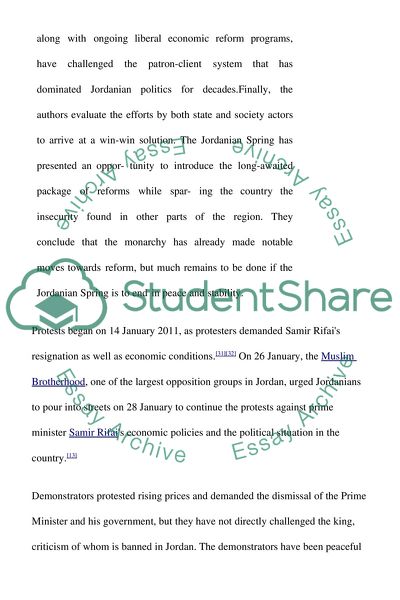Cite this document
(Arab Spring Protest in Jordan Essay Example | Topics and Well Written Essays - 2000 words, n.d.)
Arab Spring Protest in Jordan Essay Example | Topics and Well Written Essays - 2000 words. https://studentshare.org/history/1804331-country-jordan
Arab Spring Protest in Jordan Essay Example | Topics and Well Written Essays - 2000 words. https://studentshare.org/history/1804331-country-jordan
(Arab Spring Protest in Jordan Essay Example | Topics and Well Written Essays - 2000 Words)
Arab Spring Protest in Jordan Essay Example | Topics and Well Written Essays - 2000 Words. https://studentshare.org/history/1804331-country-jordan.
Arab Spring Protest in Jordan Essay Example | Topics and Well Written Essays - 2000 Words. https://studentshare.org/history/1804331-country-jordan.
“Arab Spring Protest in Jordan Essay Example | Topics and Well Written Essays - 2000 Words”. https://studentshare.org/history/1804331-country-jordan.


